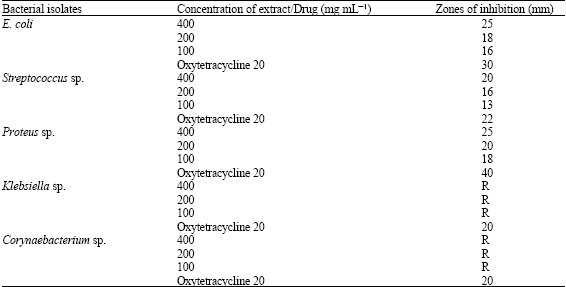Research Article
Effects of Aqueous Leaf Extracts of Psidium guajava on Bacteria Isolated from the Navel of Day-Old Chicks
Department of Veterinary Medicine, University of Maiduguri, P.M.B. 1069, Maiduguri, Nigeria
H. Usman
Department of Chemistry, University of Maiduguri, P.M.B. 1069, Maiduguri, Nigeria
M.B. Abubakar
Department of Veterinary Microbiology and Parasitology, University of Maiduguri, P.M.B. 1069, Maiduguri, Nigeria
B. Ibrahim
Department of Veterinary Medicine, University of Maiduguri, P.M.B. 1069, Maiduguri, Nigeria











